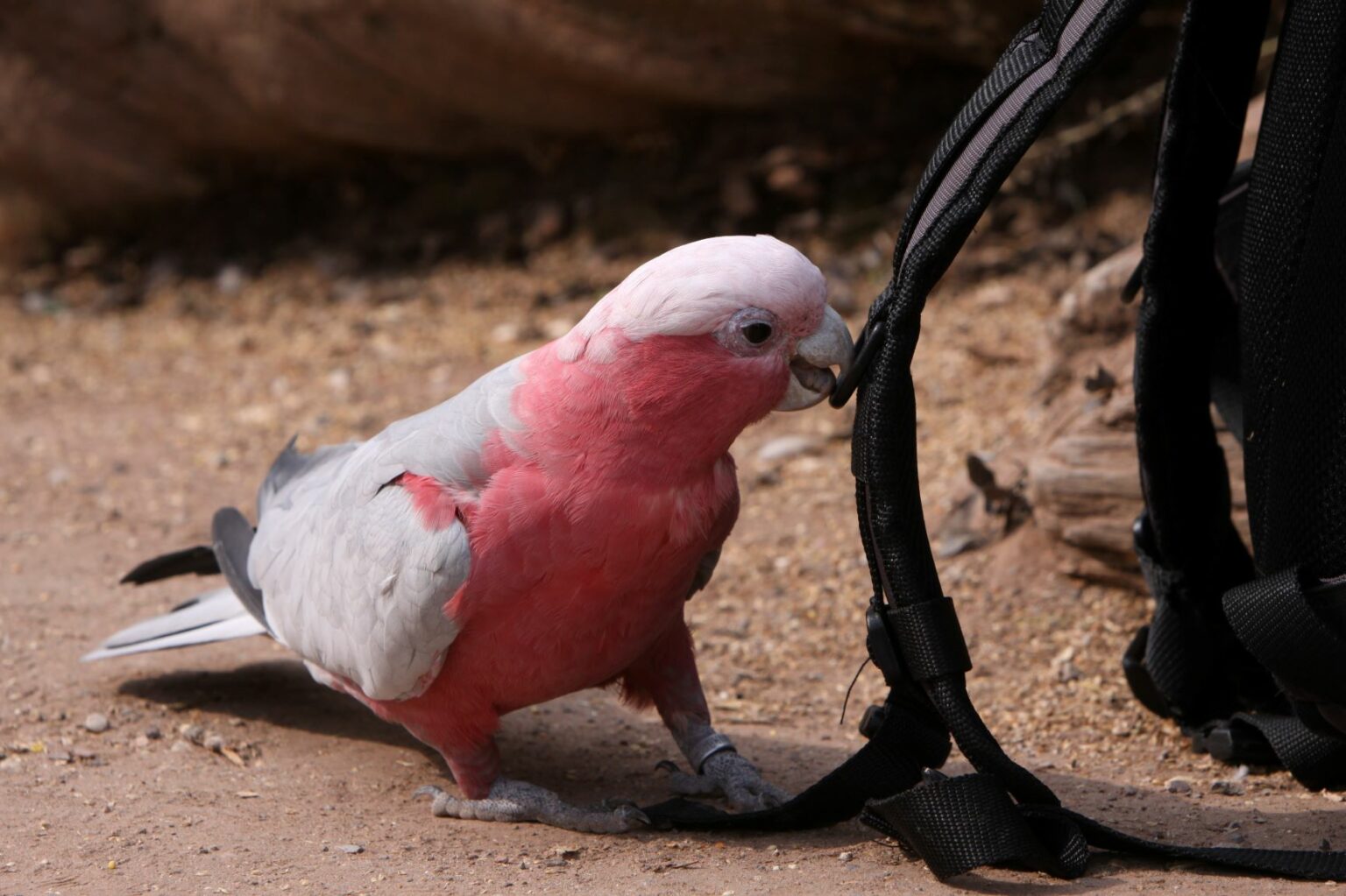


The use of extruded diets (extrusion is the way good quality pellets are made) greatly reduces the risk of allergies as most of the proteins are denatured and don’t act as triggers for the allergy. I rang the owners 2 days later – the bird had not picked himself once and was back to his old cheeky ways. An immediate switch was made to a diet without oats. The owners rang back that afternoon to say the bird was really picking at himself and couldn’t get comfortable. We decided to put this little bird on an oat only diet for 24 hours. It appeared that the old mix did not contain oats but the new one did! Time to test the allergy theory. The itchiness had started after a new seed mix was introduced. A little questioning of the owners bought up an interesting point. When I looked at his seed mix it was a pretty typical parrot mix (not great but acceptable). His major feathers were normal but he had been pulling out his down feathers.
GALAH COCKATOO PLUCKING SKIN
When I looked at his skin it appeared OK, no scabs, not dry and flaky and no lice. This would last for several minutes then he would settle down. The little bird would be sitting quietly on his perch and then suddenly start dancing around, picking at his flanks and screaming. Recently I had a young hand raised cockatiel bought to me because he appeared ‘itchy’. The trick is to recognise that it is an allergy and then find the source of the allergy. Often the allergy is related to something new in the bird’s environment. Allergies are not restricted to Cockatiels but we do see them commonly in this species.Īllergies may develop at any time, the age of the bird does not matter. The do, however, suffer from a few conditions that you should know about.Īllergies are a recently recognised problem in birds. These little birds are a delight to own, are very hardy and have great personalities. Pet Cockatiels have become very popular since the boom in hand rearing. In this article we will examine some of the common causes of problem in a few of the most popular pet birds. Knowing the common conditions in the species of bird you keep can be a great help in managing your birds.Īllergies, poor nutrition, psychological problems and viral infections are some of the causes of feather conditions in birds. Many of these feather conditions are preventable while others are quite difficult to fix.ĭifferent species are prone to different causes of feather and skin conditions. Of the cases that are presented to Avian Veterinarians, the single biggest complaint is a problem with the bird’s feathers. Nothing is more noticeable than a bird with a feather condition – why is it that the worst looking bird always sits at the front of the aviary? Those of us that are bird lovers hate to see our birds with poor feathers.


 0 kommentar(er)
0 kommentar(er)
